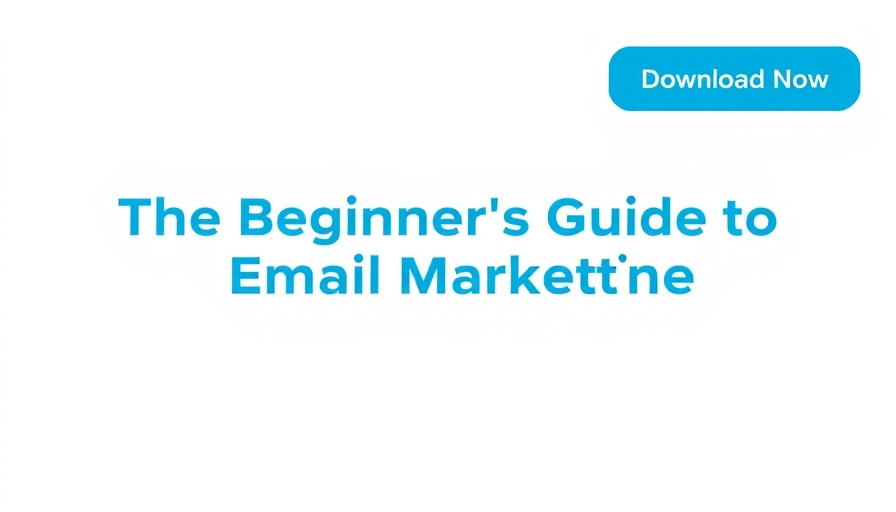
Harnessing AI Email Marketing Analytics for Revenue Growth
Email marketing remains one of the most powerful channels for small and medium-sized businesses (SMBs) to connect with customers, generate leads, and drive revenue. But in a landscape like today’s—where consumer preferences shift rapidly and competition for attention is fierce—standard email marketing metrics just won't cut it. Enter AI email marketing analytics. This technology not only optimizes the effectiveness of email campaigns but also provides unprecedented insights into subscriber behavior, paving the way for revenue growth.
Why AI Email Marketing Metrics Matter
Before diving into specific performance metrics, it’s crucial to understand why companies should not overlook the importance of robust data analytics enabled by artificial intelligence. AI email marketing metrics surpass traditional indicators like open rates and click-through rates by integrating predictive scoring, predictive analytics, and real-time optimization. With such insights, marketers gain a more nuanced understanding of customer interactions and engagement. Brand loyalty thrives when customers feel seen and understood, hence the significance of leveraging these advanced metrics.
Five AI-Powered Metrics That Drive Revenue Growth
- Engagement Probability Scores: This predictive metric identifies which subscribers are most likely to interact positively with campaigns. By focusing on these high-value targets, marketers can craft personalized messages that resonate deeply, increasing not just engagement but conversion rates.
- Optimal Send Times: AI can analyze a subscriber’s past behavior to determine the best times to send emails. Timing is crucial in maximizing open rates and engagement—sending an email when a subscriber is most likely to check their inbox increases overall effectiveness.
- Content Performance Patterns: Understanding which email content drives engagement enables brands to replicate successful strategies. AI can track interactions with different types of content and identify trends, aiding marketers in crafting messages that hit home.
- Deliverability Trends: It's not just about getting your emails opened; they also need to land in the inbox and not the spam folder. AI-driven analytics can monitor deliverability rates across campaigns and suggest adjustments to ensure higher engagement.
- Email Revenue Attribution: Knowing which campaigns directly contribute to revenue allows marketers to allocate resources effectively. AI tools can connect revenue data back to specific campaigns, revealing the impact of email marketing on the bottom line.
Leveraging Tools for Efficiency
Implementing AI-driven analytics tools like HubSpot Marketing Hub, Klaviyo, or Salesforce can significantly enhance your marketing efforts. These platforms offer intuitive dashboards that automatically highlight patterns that may be overlooked by human analysts. For example, HubSpot’s AI-driven metrics allow businesses to streamline workflows, saving time and reducing the cognitive load on marketers, enabling them to focus on creative strategies and customer engagement.
The Emotional Impact of Well-Executed Campaigns
Implementing effective AI analytics in email marketing has significant emotional and psychological benefits for customers. When they receive highly relevant and personalized emails, it fosters a sense of recognition and appreciation. Keeping customers happy doesn't just translate to more sales—it creates long-term brand loyalty.
Common Misconceptions About AI in Email Marketing
Even with its many benefits, misconceptions about AI in email marketing still prevail. Some believe that AI reduces the need for human creativity in crafting effective emails. However, AI's role is strategic. It provides valuable insights, but the creative process still relies on human input, ensuring that brand messaging remains authentic and personable.
Conclusion: Taking Action for Future Gains
Embracing AI email marketing analytics isn’t just a trend; it’s crucial for SMBs looking to thrive in an increasingly competitive landscape. By focusing on predictive metrics, understanding content preferences, and optimizing send times based on customer behavior, businesses can refine their strategies for more effective campaigns and significant revenue growth.
Now is the time for small and medium businesses to take action—explore AI-powered analytics tools, decide on performance metrics, and start crafting email campaigns that resonate. Your customers—and your bottom line—will thank you.
 Add Row
Add Row  Add
Add 



Write A Comment